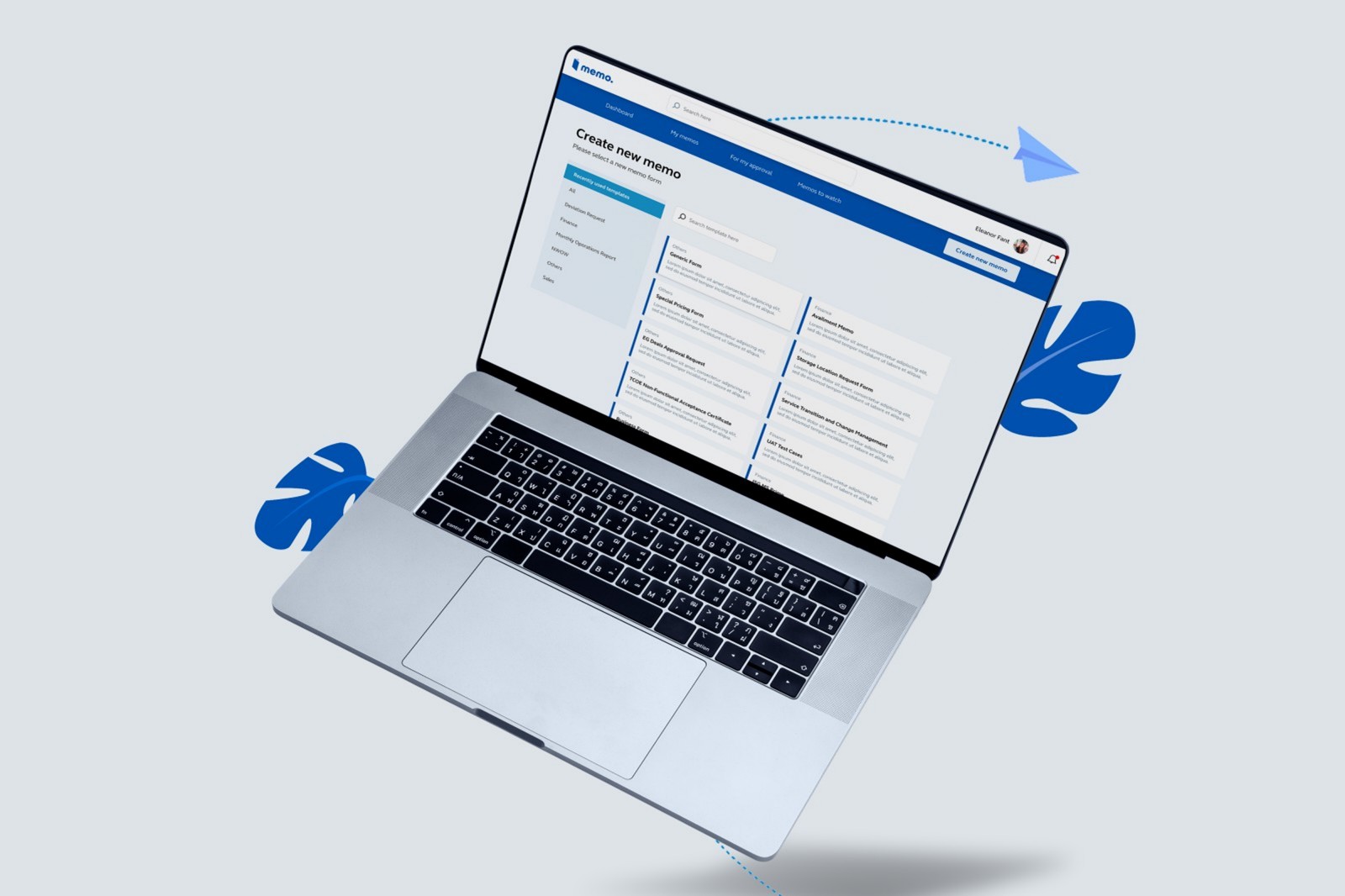
-
Category:
UX Design
-
Date:
Jan 2022 - Dec 2022
Overview
As part of risk management, a ready to use system was developed for managing occupants and inventory resources for the temporary shelters to be activated by the company for employees and their dependents who are in state of emergency.
Problem statement
There is a need for a system that can manage temporary shelter operations during emergencies. The system must be ready to efficiently manage occupants and inventory to ensure a smooth experience during such critical situations.
Role & audience
As lead Experience Designer for the system to manage temporary shelters, I created an efficient, user-friendly solution through a combination of process review, user persona creation, information architecture, and wireframe design. The aim was to deliver a seamless experience for the employees, dependents, building concierge, building managers, and medical personnels during these heightened situations.
Understanding the shelter process and its stakeholders
The first step I took was to analyze the current process, which I then translated into diagrams to gain a deeper understanding of it. I created swimlane diagrams that helped me identify specific points in the process that needed emphasis or further attention. This process allowed me to identify scenarios that may have been missed, and ensured that the new system design was comprehensive and inclusive.
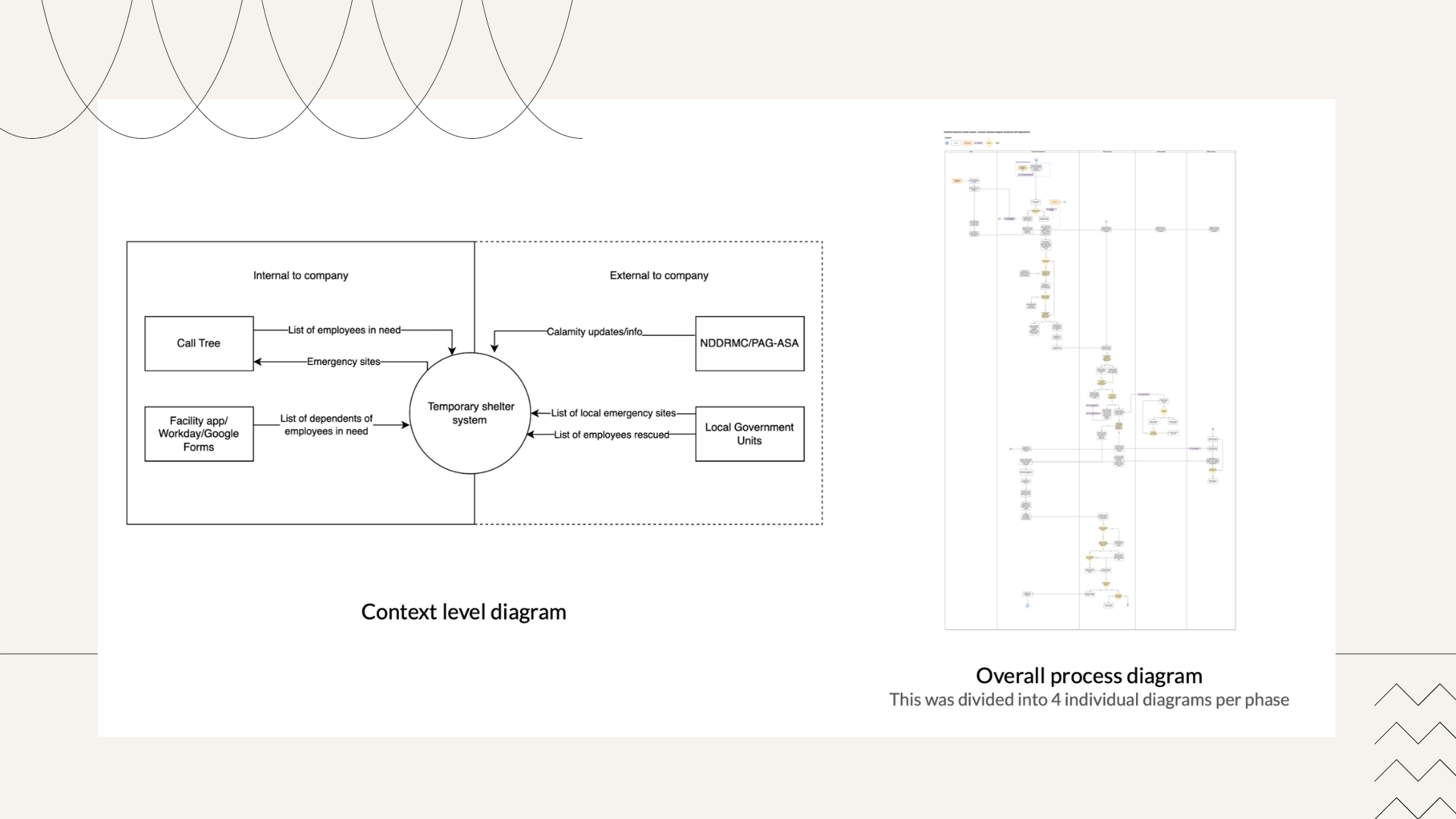
Context level diagram and sample swimlane diagram created
To make things simpler, I divided the process into 4 main phases. For each phase, the key activities and possible pain points were identified. This helped me gain a deeper understanding of the user needs and expectations, which I then used for my proposed experience.
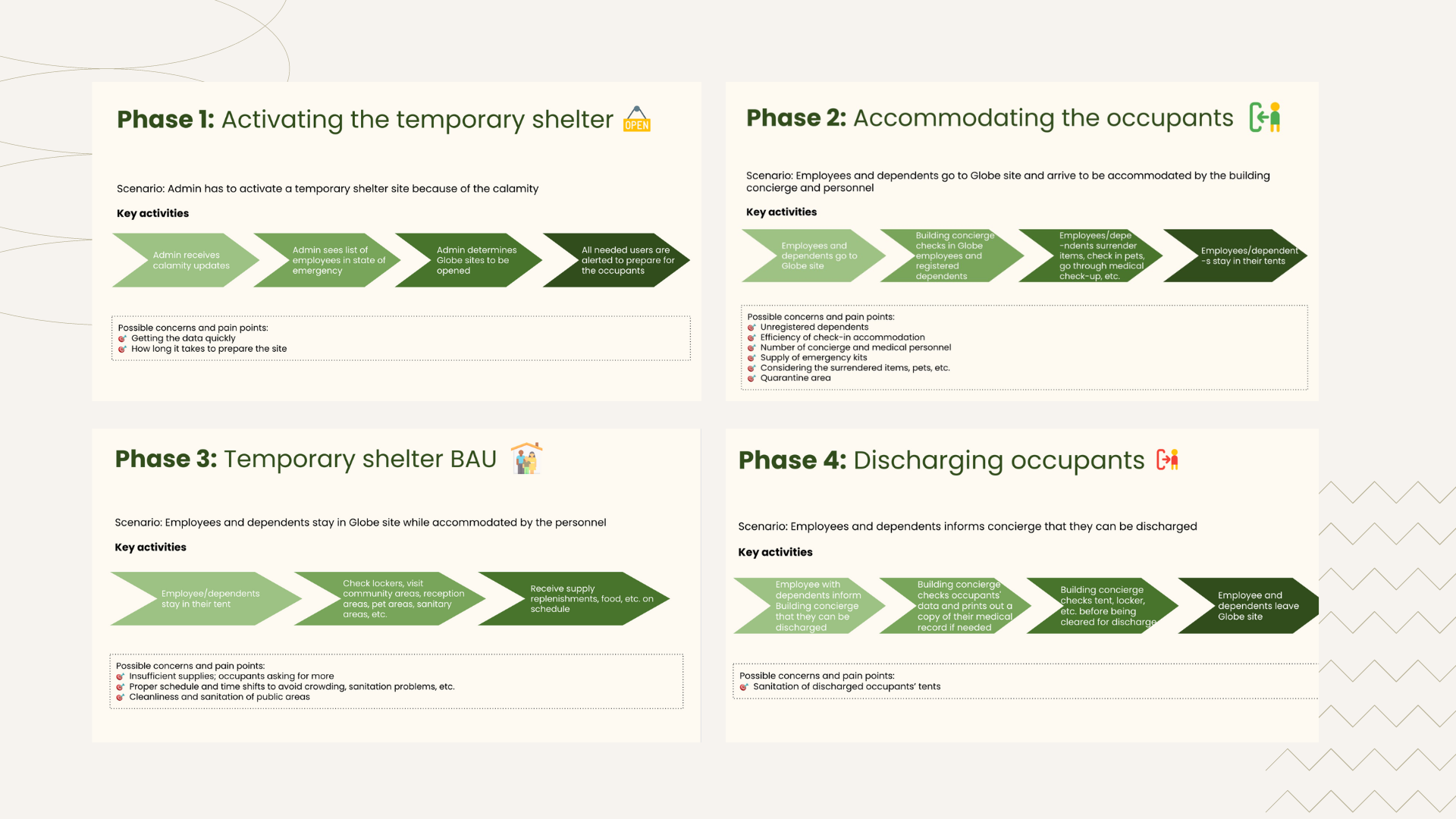
Process phases of the calamity temporary shelter project
To gain a better understanding of the user experience, I also conducted observations of my fellow employees in the company as well as my household's disaster preparation strategies, which I used to create user personas. While I wasn't able to conduct formal interviews with the users involved, I did have the opportunity to speak with risk management representatives from the project itself to gain valuable insights into their perspectives and concerns.
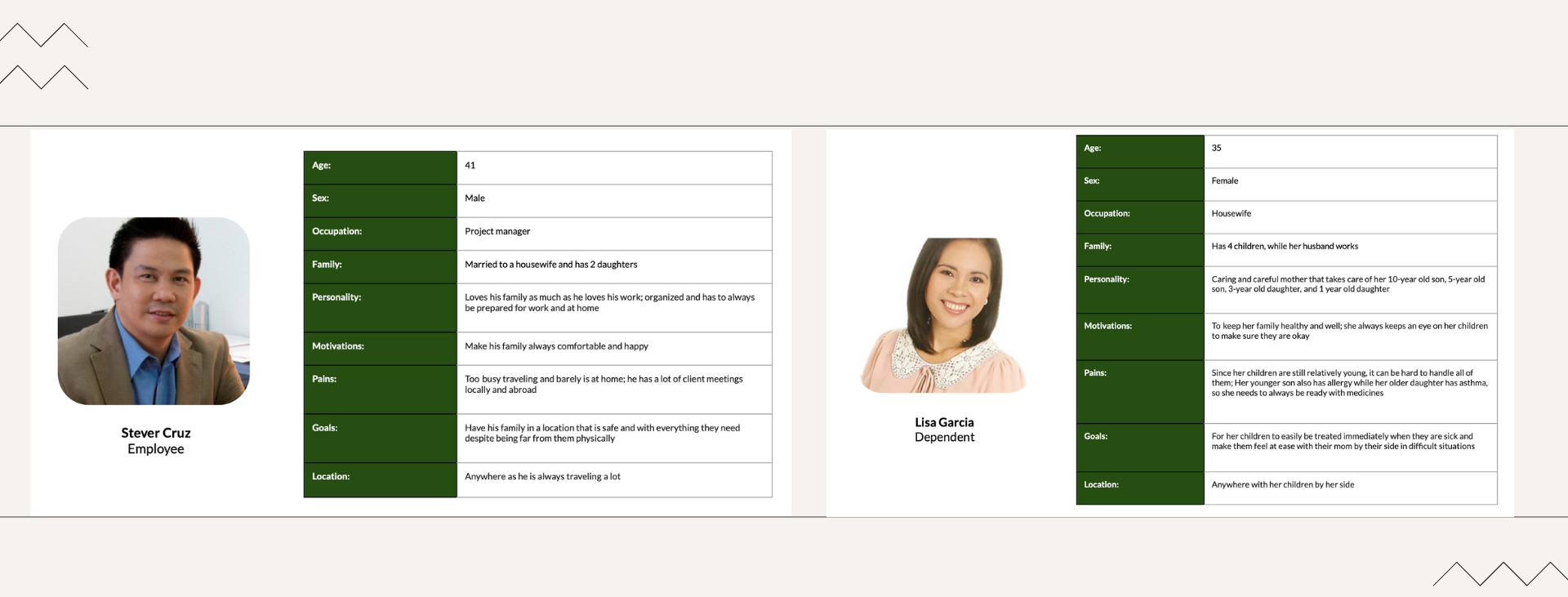
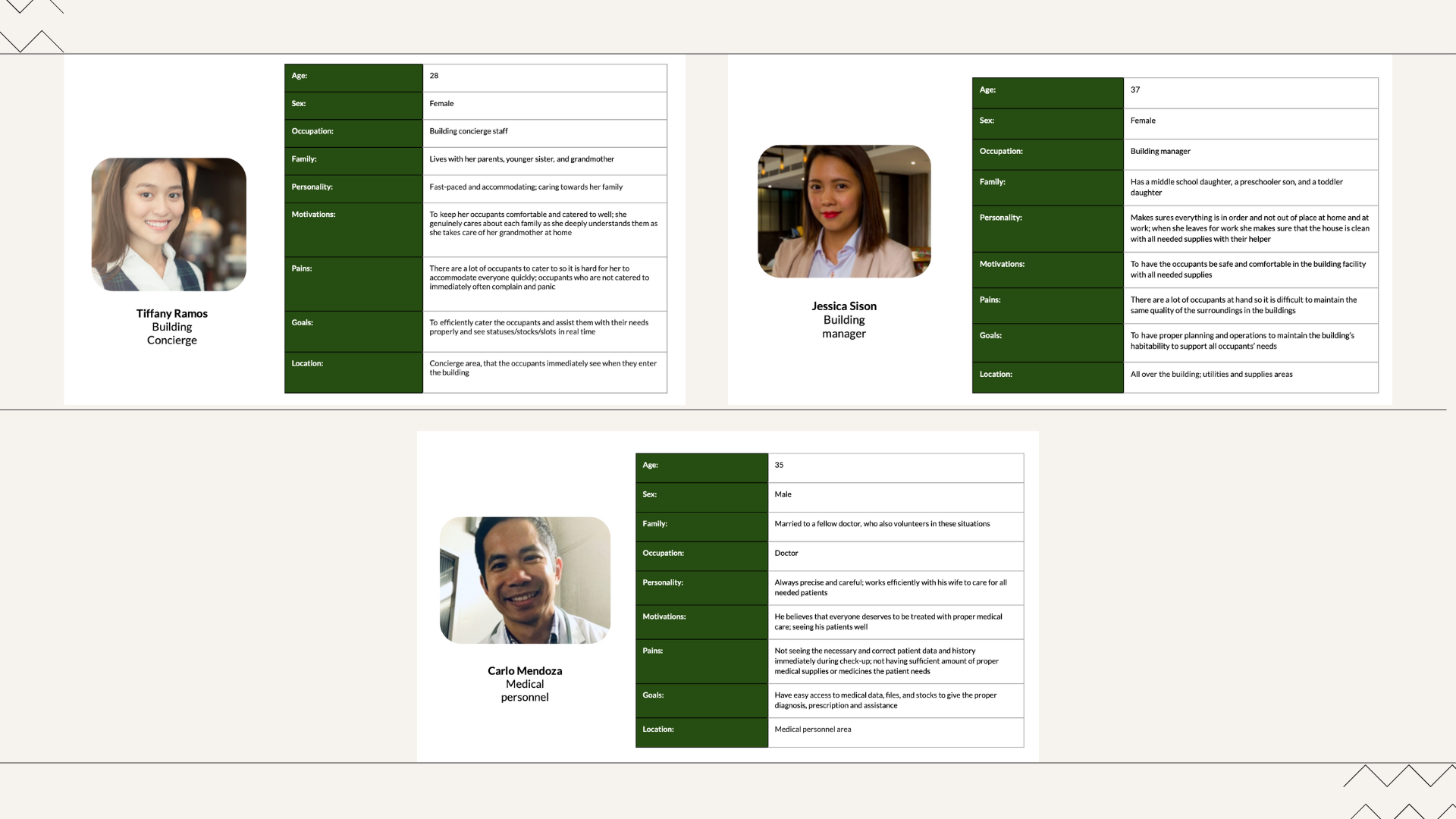
User personas for the calamity temporary system
During my review of the project's process flows, I was interested in understanding how other organizations globally have addressed disaster preparedness since it is a risk we all face. I found the study Problems and Implications of Shelter Planning Focusing on Habitability: A Case Study of a Temporary Disaster Shelter after the Pohang Earthquake in South Korea which offered valuable insights that we can consider in our experience.
The study emphasizes the importance of habitability in shelter planning and management and highlights three critical lessons:
1) Adequate personal space and privacy are essential for residents to feel comfortable in a shelter.
2) Access to basic necessities such as food, water, and sanitation is crucial for the health and well-being of residents in a disaster shelter.
3) Effective communication and cooperation among stakeholders are crucial for successful shelter planning and management.
To ensure habitability, the system should prioritize providing adequate personal space and privacy for disaster victims, establish clear communication channels and protocols among stakeholders, and ensure access to basic necessities such as food, water, and sanitation. By incorporating these key elements, we can create a system that meets the needs of disaster victims and promotes their well-being.
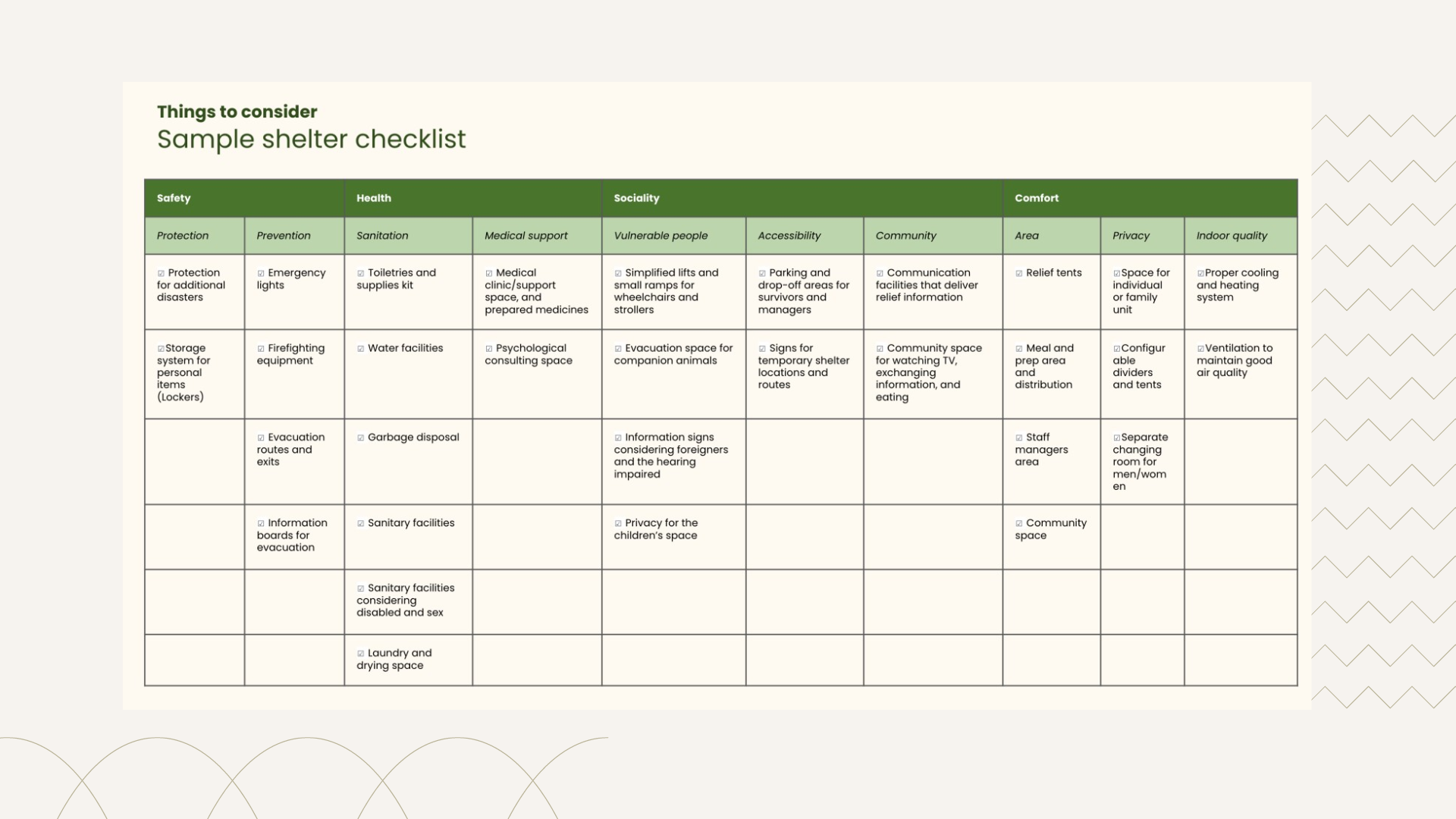
Sample checklist for the temporary shelter that can be considered
Disaster resource inventory system
With all of that research and analysis conducted, I now designed the experience for the Disaster resource inventory system.
The main users of the system are as follows:
1) Building concierge - registers the occupants
2) Medical personnel - performs medical check-up on the occupants
3) Building manager - assigns occupant to shelter, and manages inventory
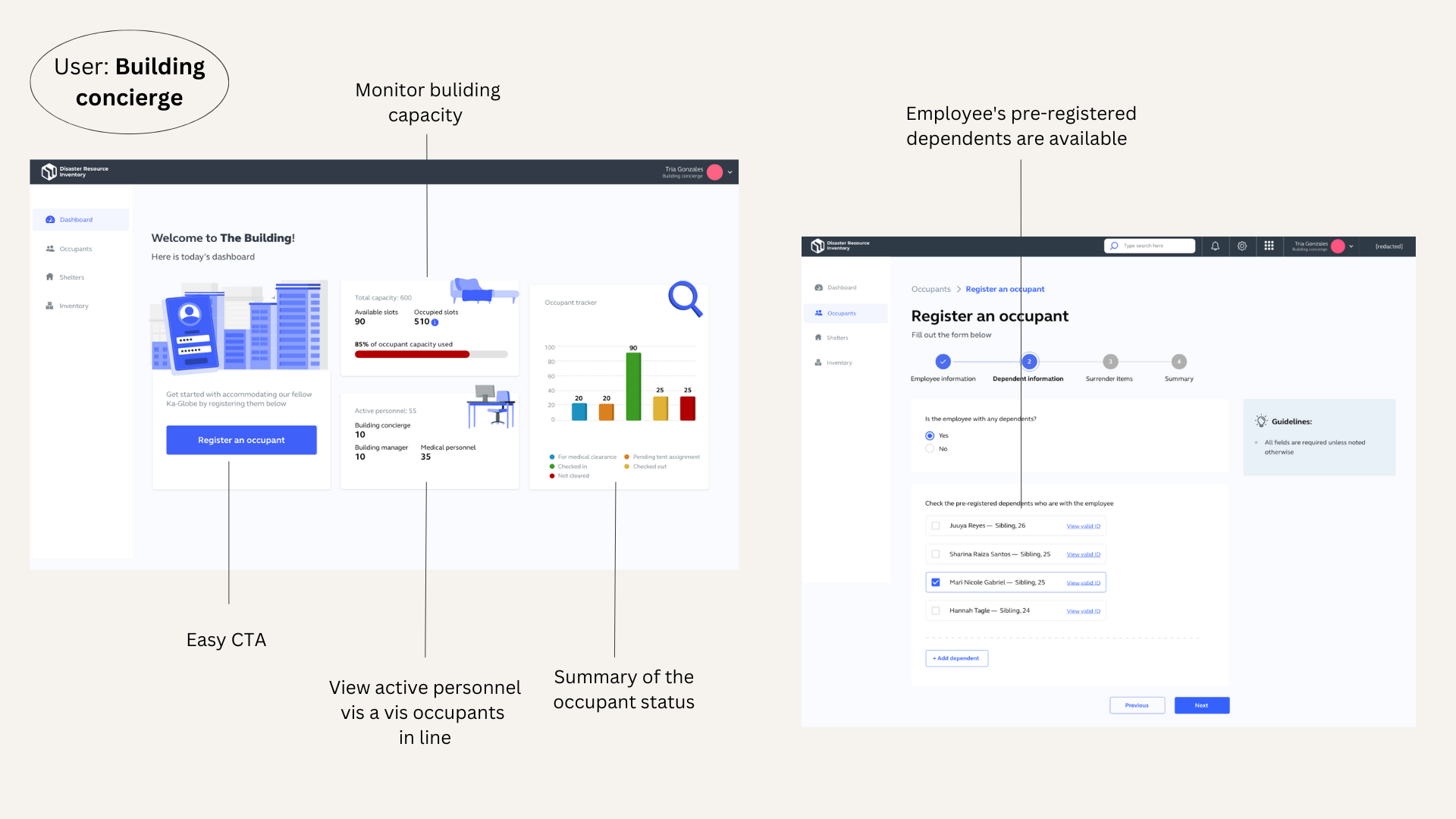
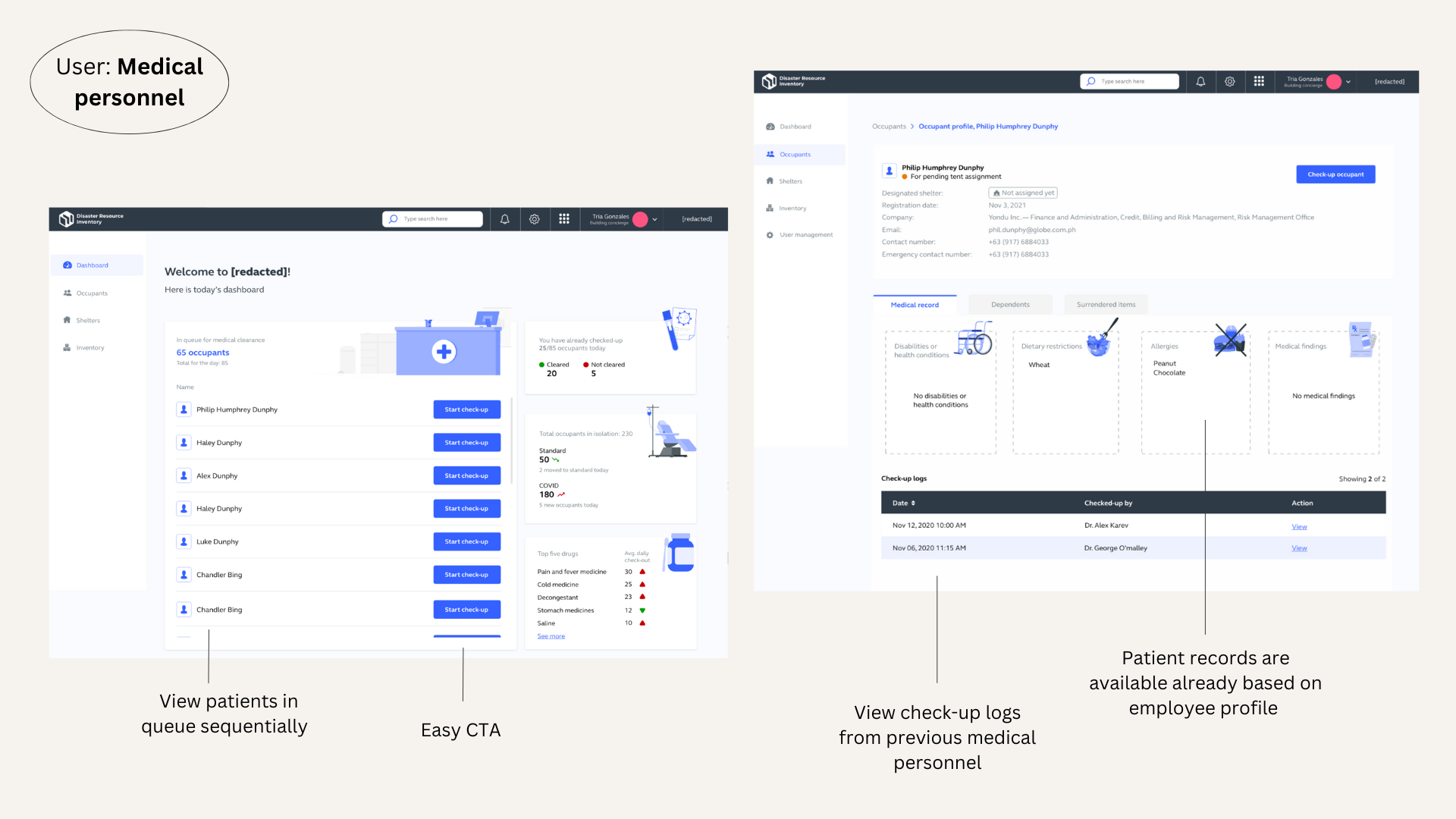
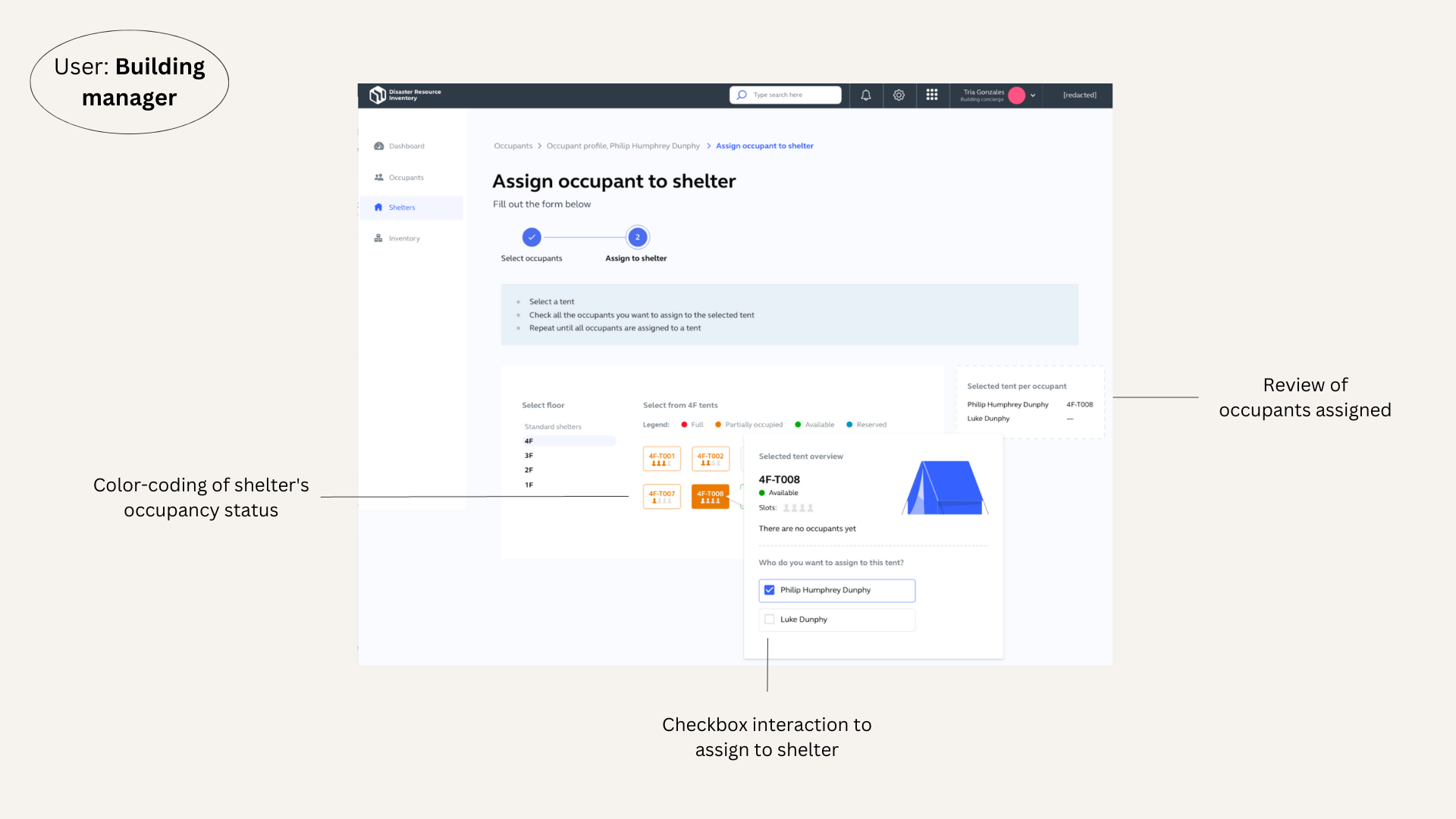
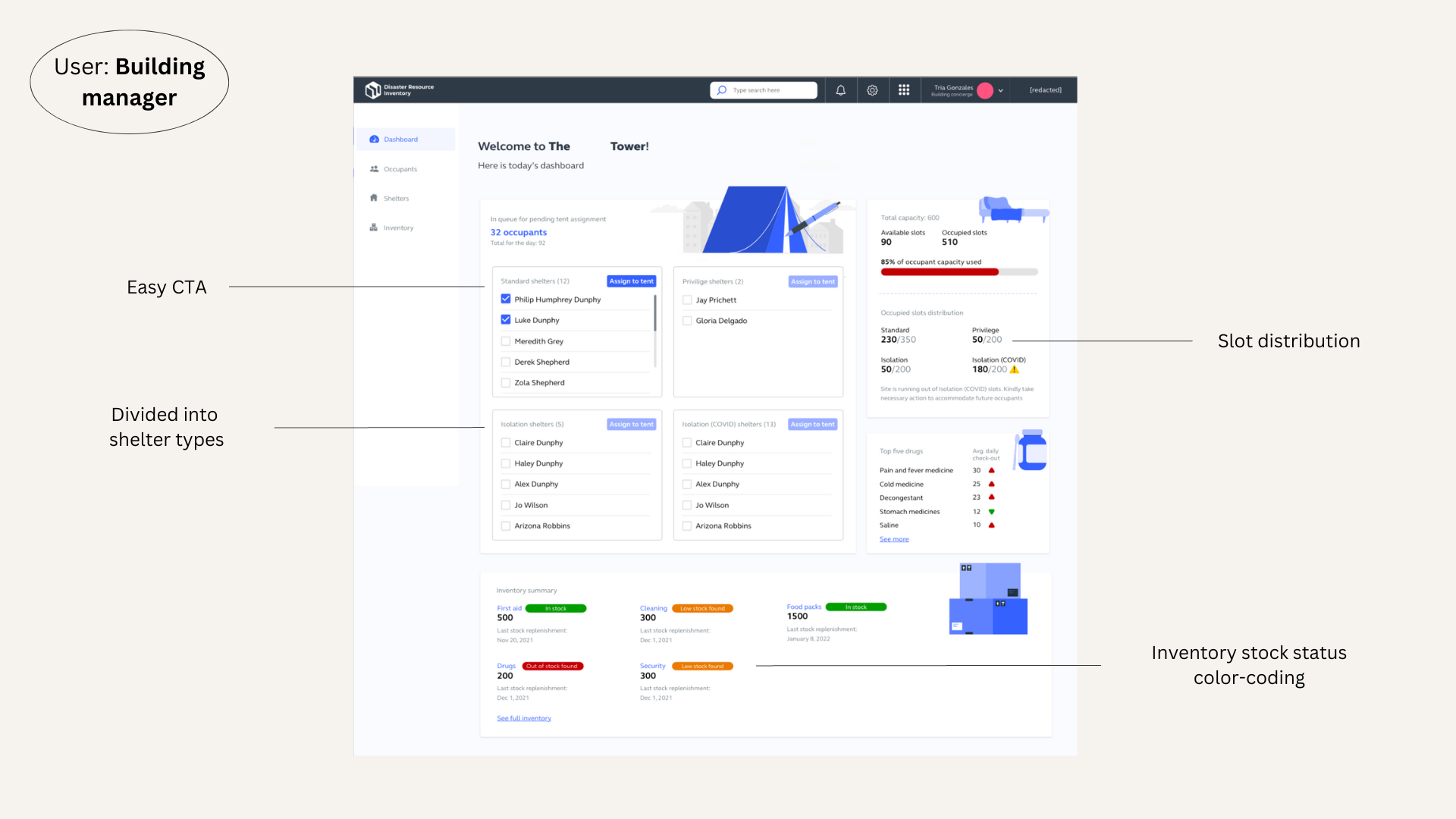
Selected screens for the Building Concierge, Medical Personnel, and Building Manager users
Insights from the Usability testing
After crafting the experience and having this developed by the team, I conducted a usability test for the system to gain insight into user experience and identify areas for improvement. After analyzing the results, I presented them to the team and stakeholders. We applied the recommended changes to the system before deployment, ensuring that it met the needs and expectations of its users. The usability testing process proved to be invaluable in creating a system that was both user-friendly and efficient. Here is a summary of how it went:
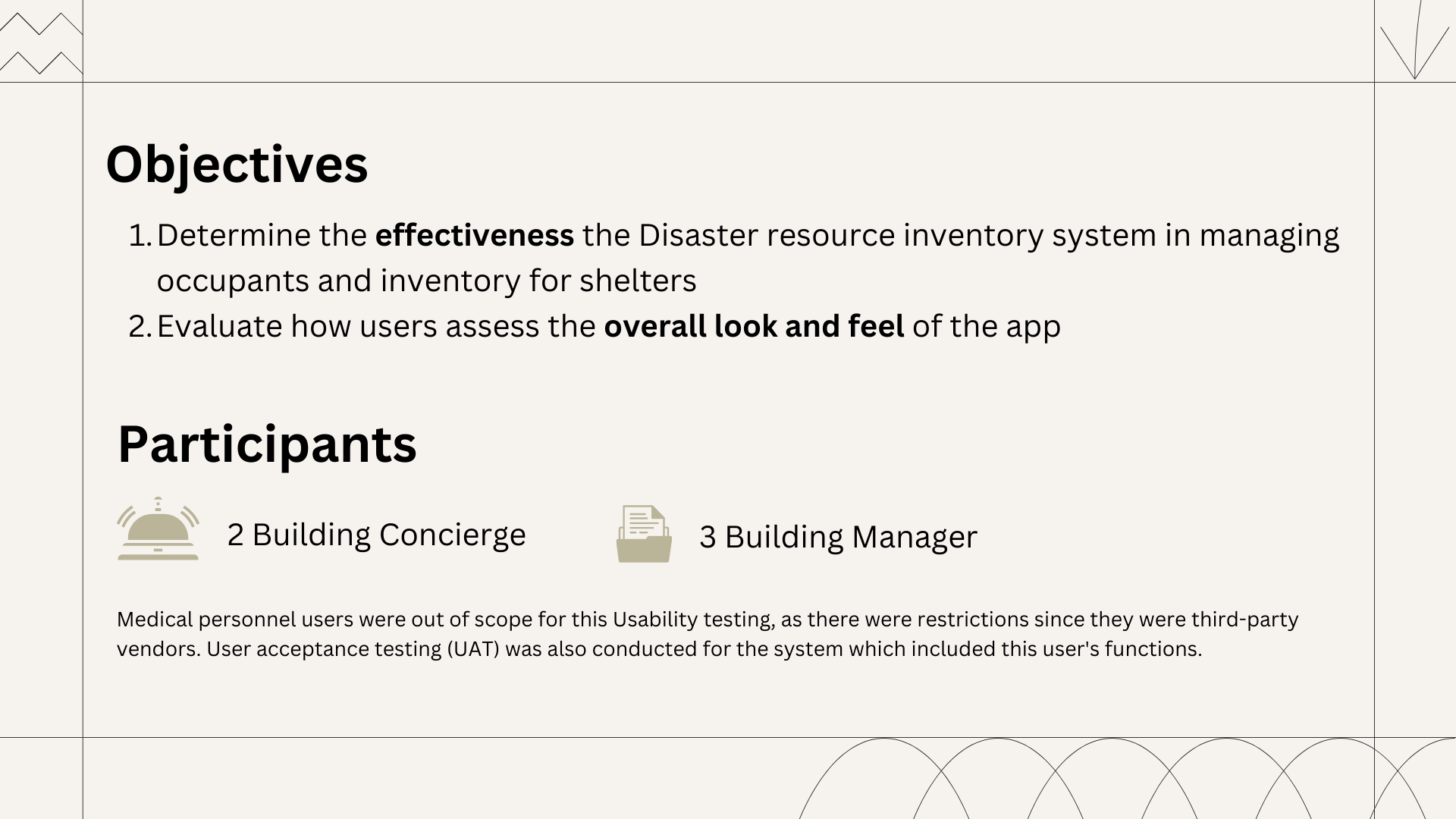
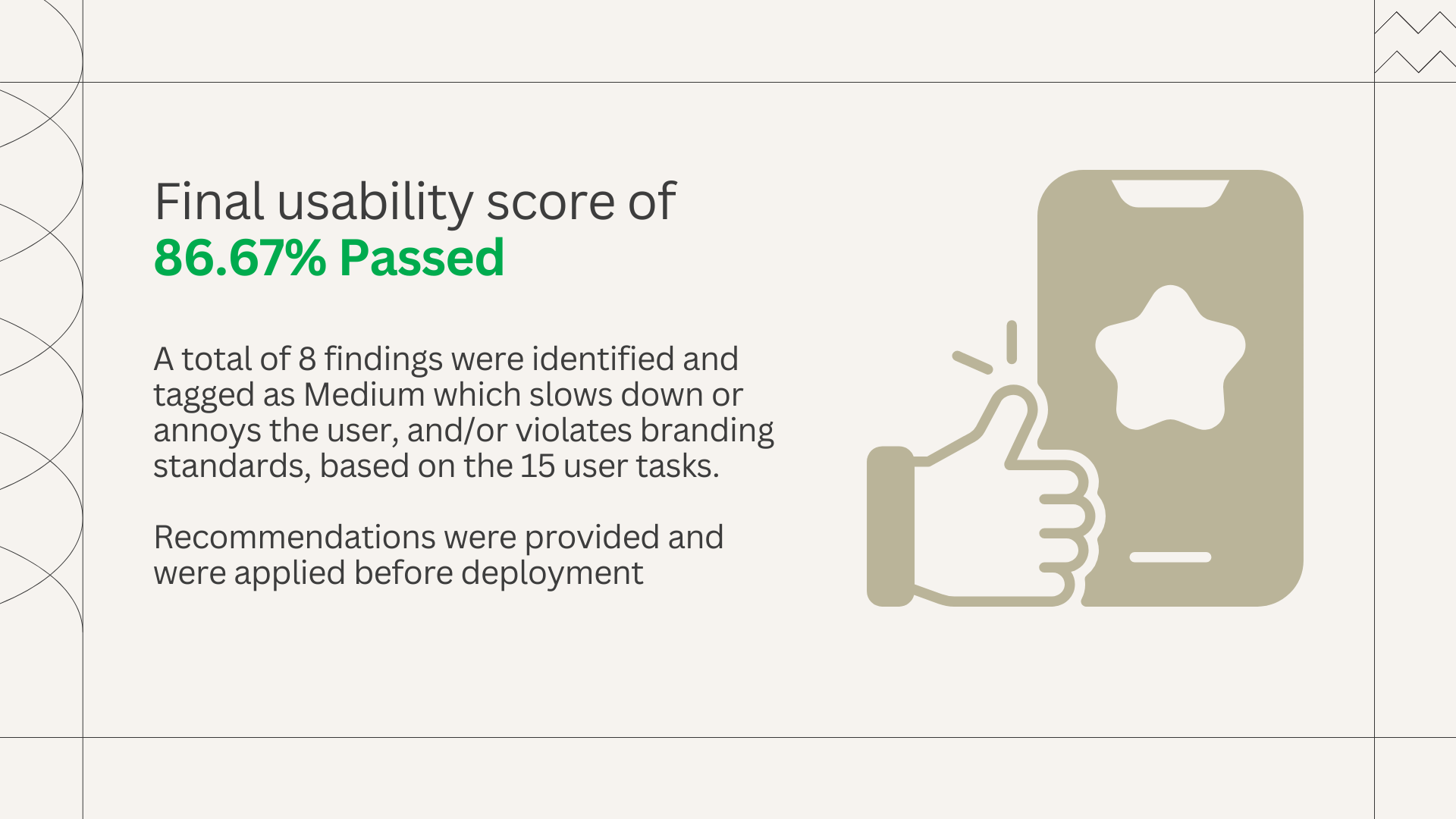
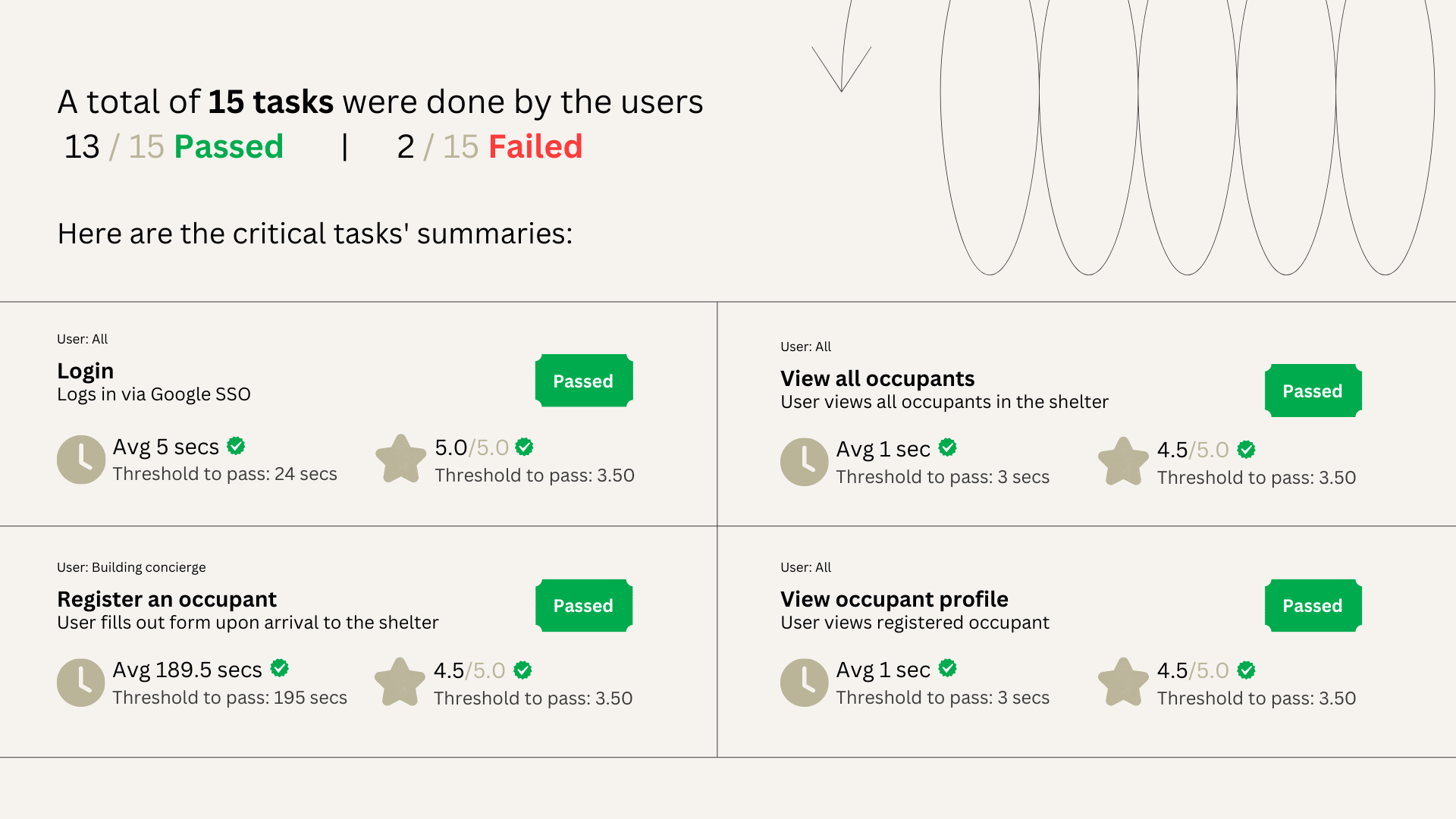
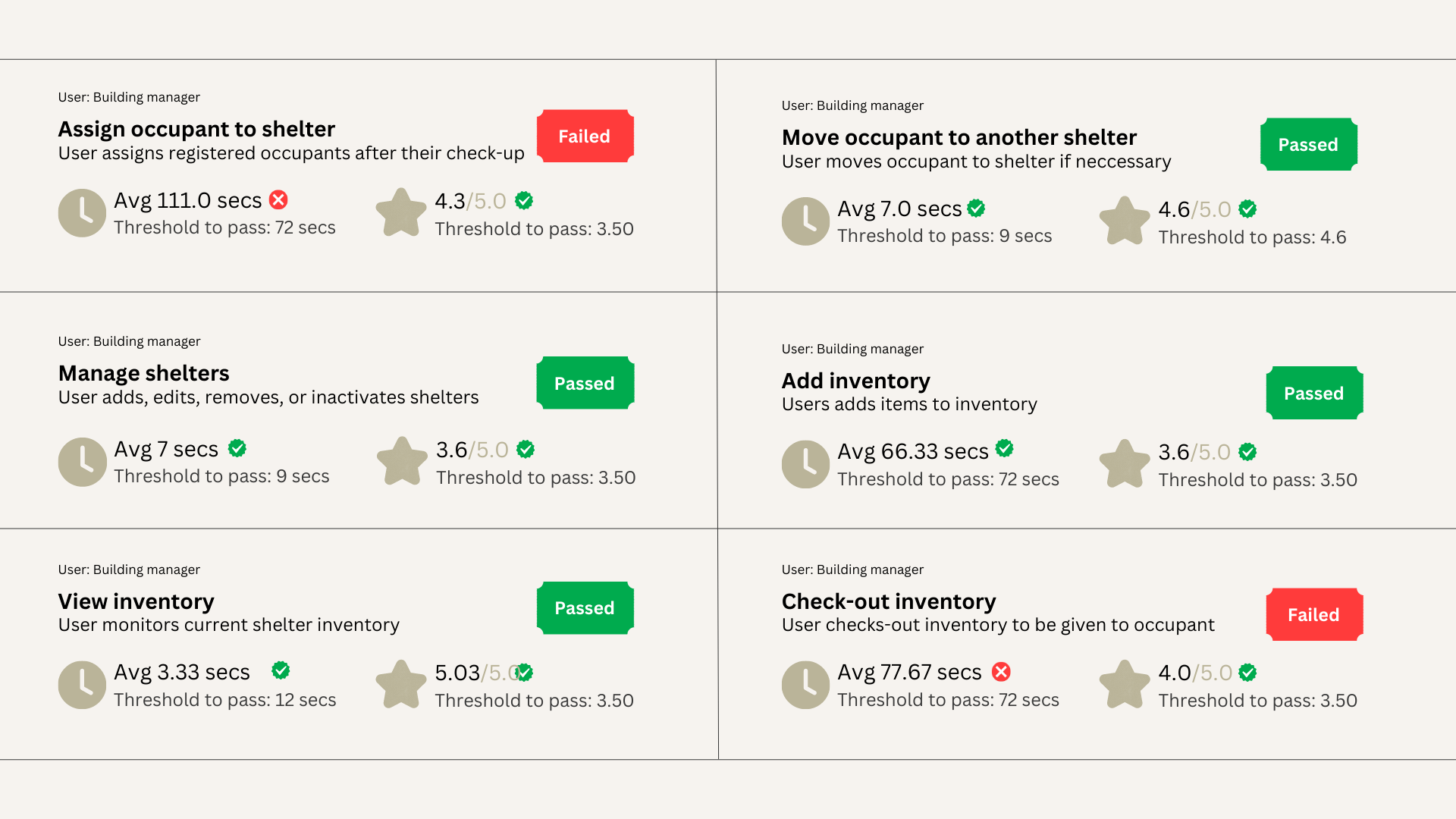
Results and lessons learned
It was both challenging and rewarding to work on a system that we hope will never have to be used, but is crucial to have in place in case of calamities.
Through this project, I recognized the importance of being prepared for natural disasters. I gained a newfound appreciation and interest in the practice of risk management through this project. The importance of being prepared for calamities and the role that risk management plays in it cannot be overstated. I am grateful for the opportunity to work on a system that addresses this critical need and to have learned from the expertise of risk management professionals.
While I hope that the system will never need to be used, it perfectly highlights our role as UX designers, and how we are able to play in ensuring that people are well-prepared for any eventuality.
Through my experience in conducting usability testing in this project, I have come to greatly appreciate the value of UX research. By gaining direct feedback from users, we can identify pain points and areas for improvement, and ultimately create a more effective and efficient product. This process not only benefits the user, but also the development team and stakeholders, as it ensures that the final product meets the needs and expectations of all parties involved. I firmly believe that usability testing is a crucial practice in the field of UX, and I will continue to prioritize it in my future projects.
This project was a valuable reminder of the importance of our work and the impact that we can have on people's lives.
Thank you so much to Paul and Billy for working with me to bring this system from design to development. I also want to extend my gratitude to Ms. Mariel and the rest of the stakeholders for their valuable collaboration and feedback.
Additionally, I want to give a huge thanks to my manager, Juuya, for guiding me and always helping me improve my skills.

